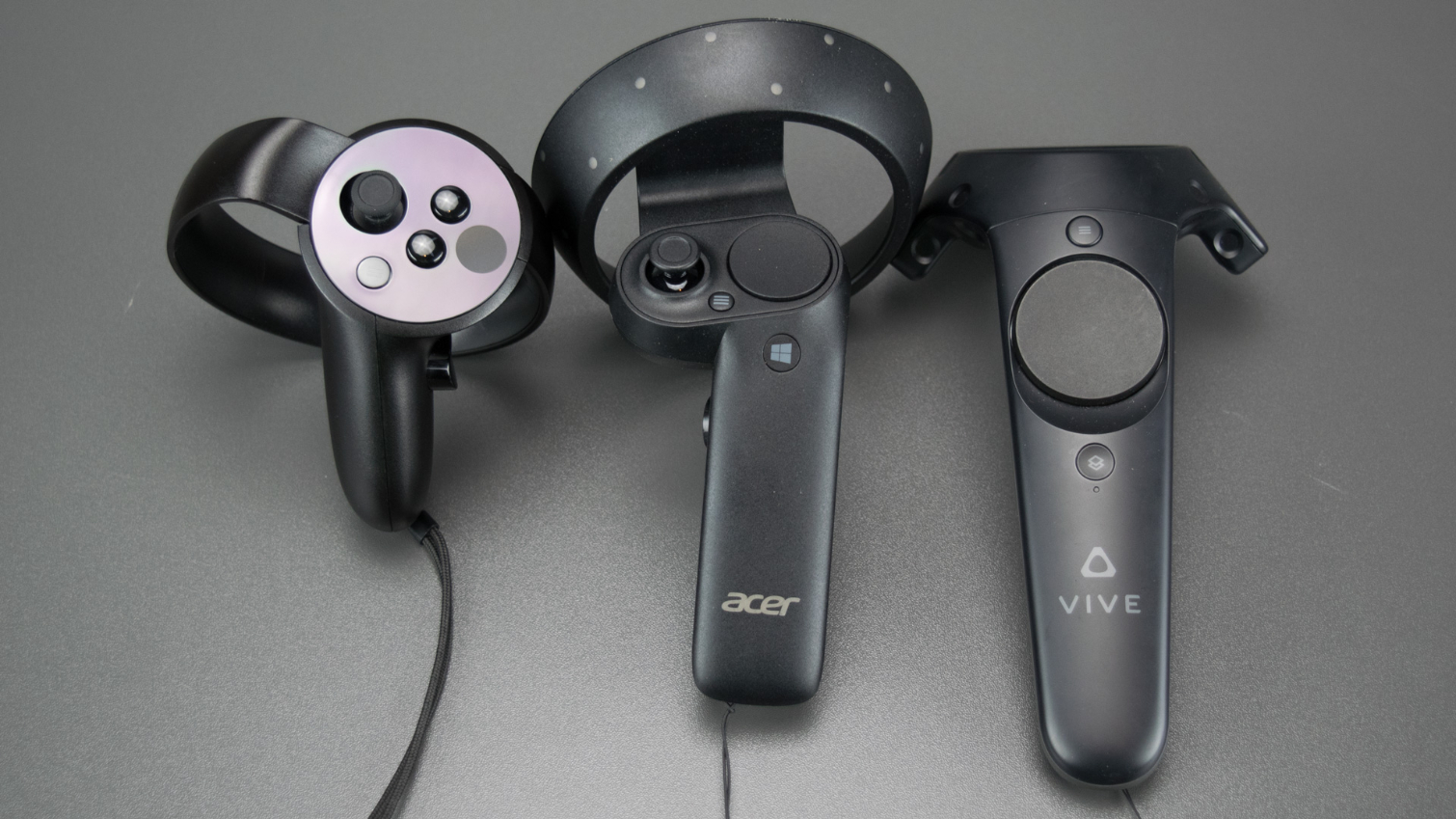Acer Windows Mixed Reality HMD Review
Why you can trust Tom's Hardware
The Acer Mixed Reality Motion Controllers
Acer's controllers ship in a box that doesn't include any padding. Each Windows Mixed Reality wand fits on either side of the box, with a piece of cardboard separating them. Acer tucks AA batteries for each controller (two each) in the packaging, too.
The WMR controllers feature a thumbstick, a trackpad, a trigger button, a grip button, a menu button, and a Windows button on the handle for input. The backside of each handle opens to reveal a slot for the batteries. We noticed that this compartment includes eight pogo-pin contact points, suggesting that it may be possible to install rechargeable packs in the future. A Bluetooth Connect button is also located under the battery compartment cover.
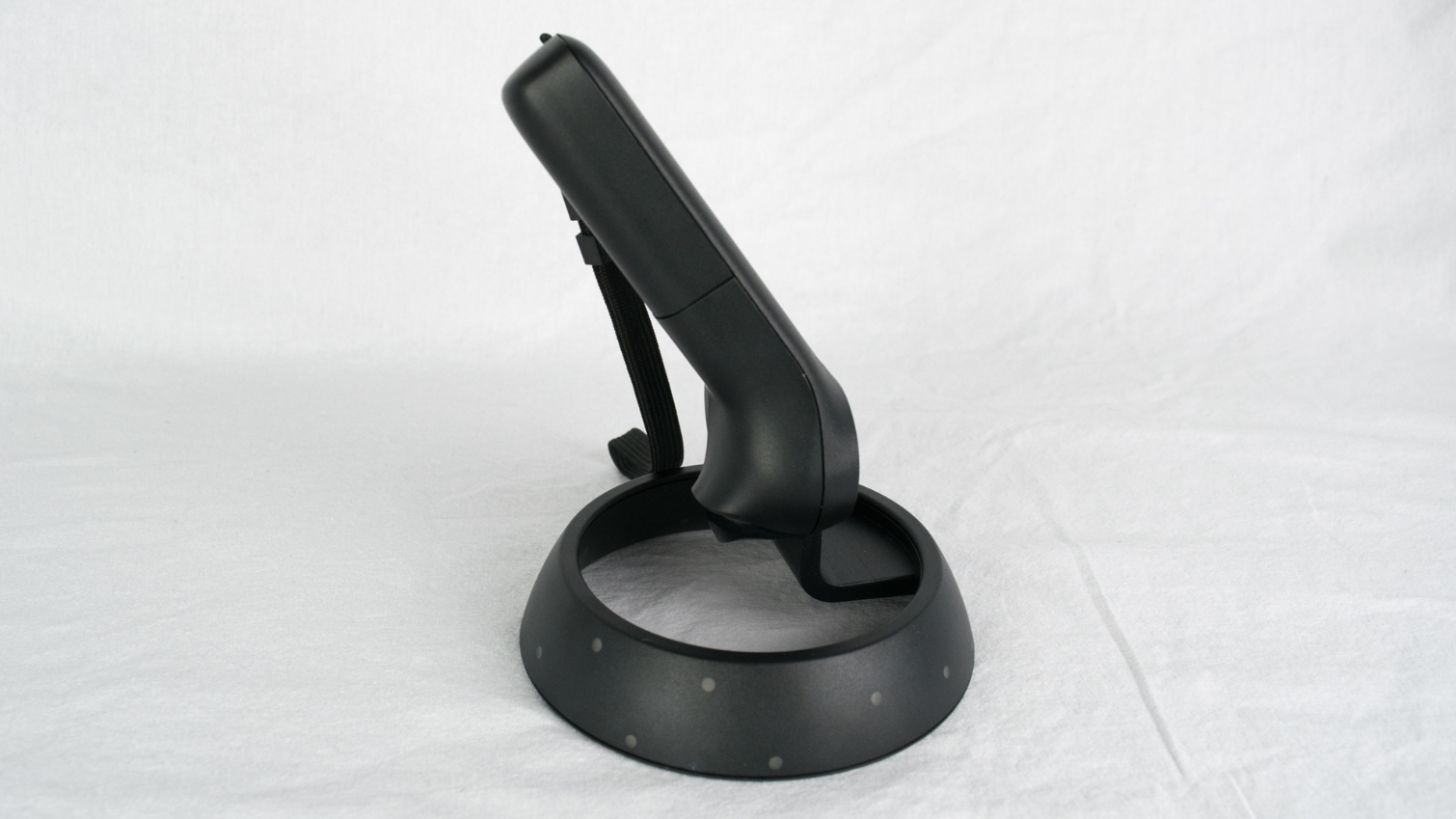
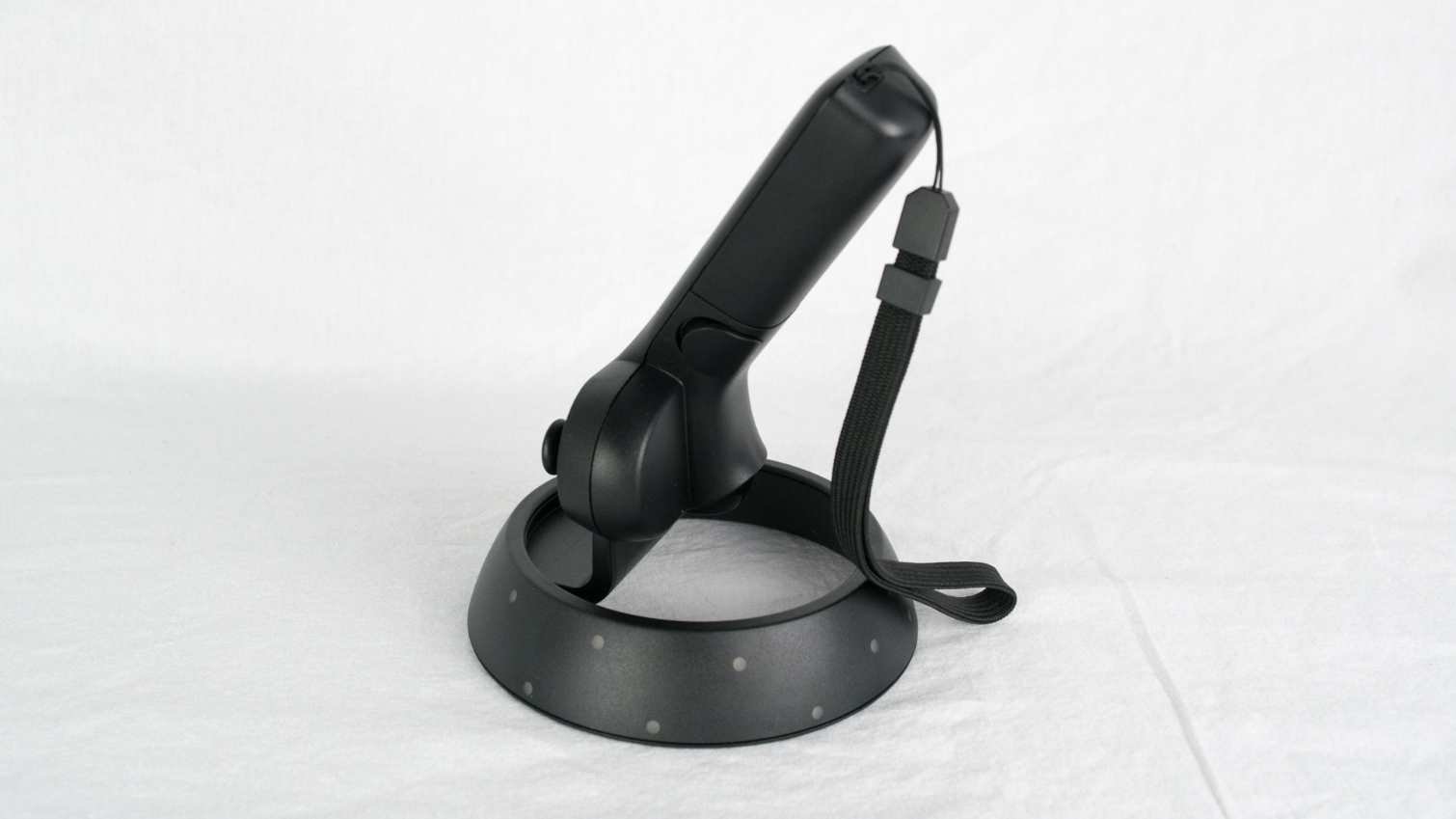
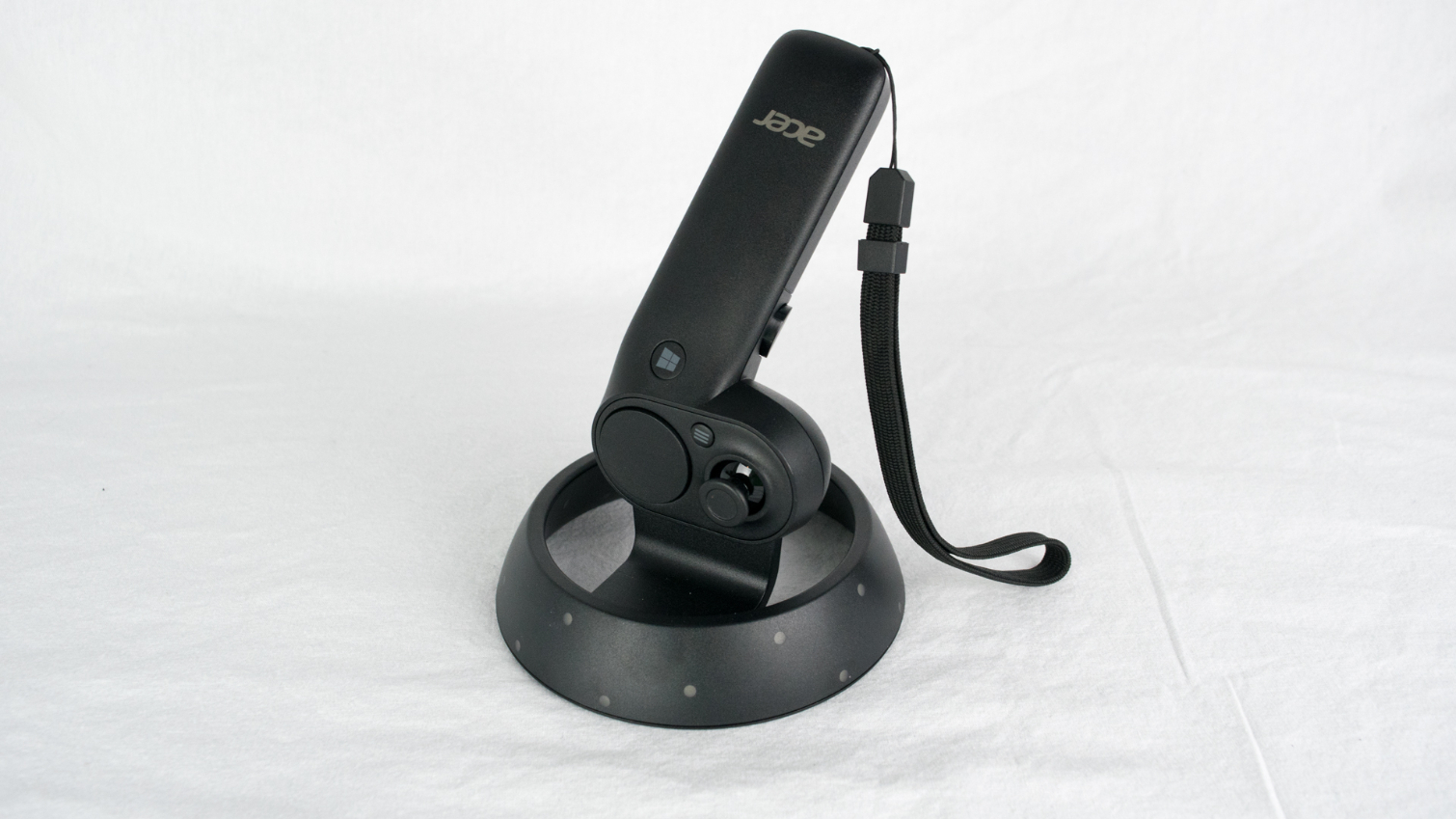
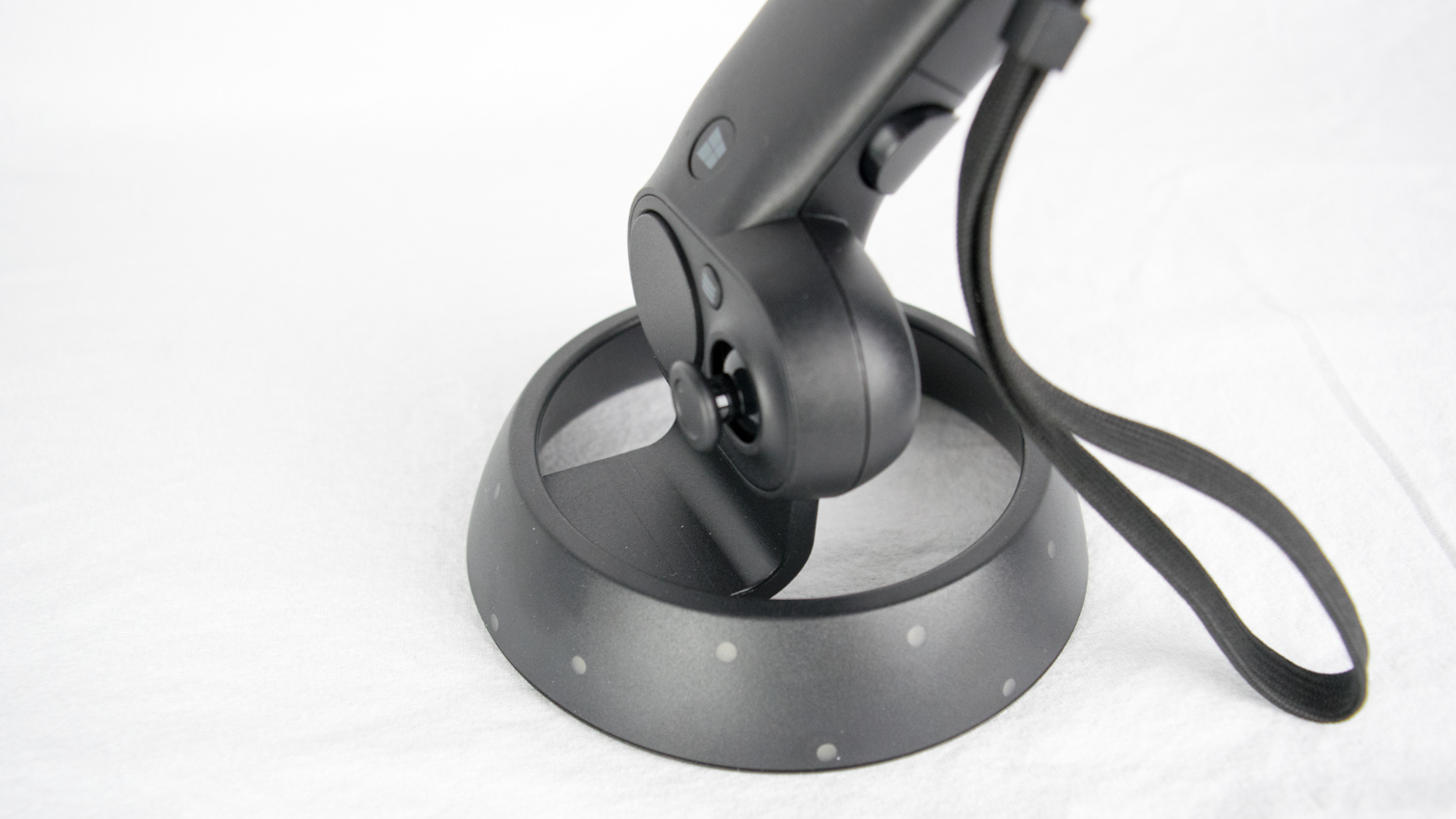
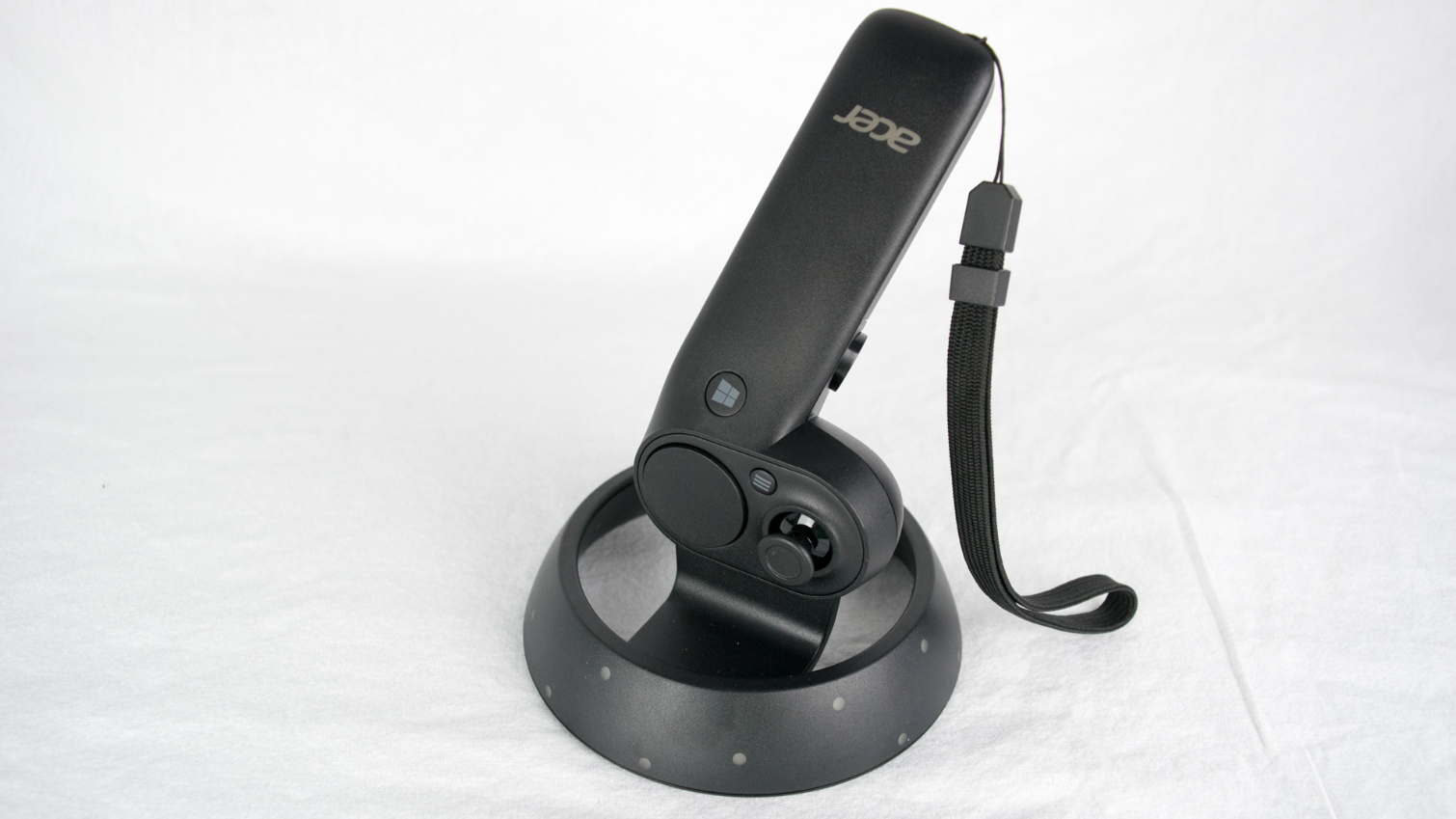

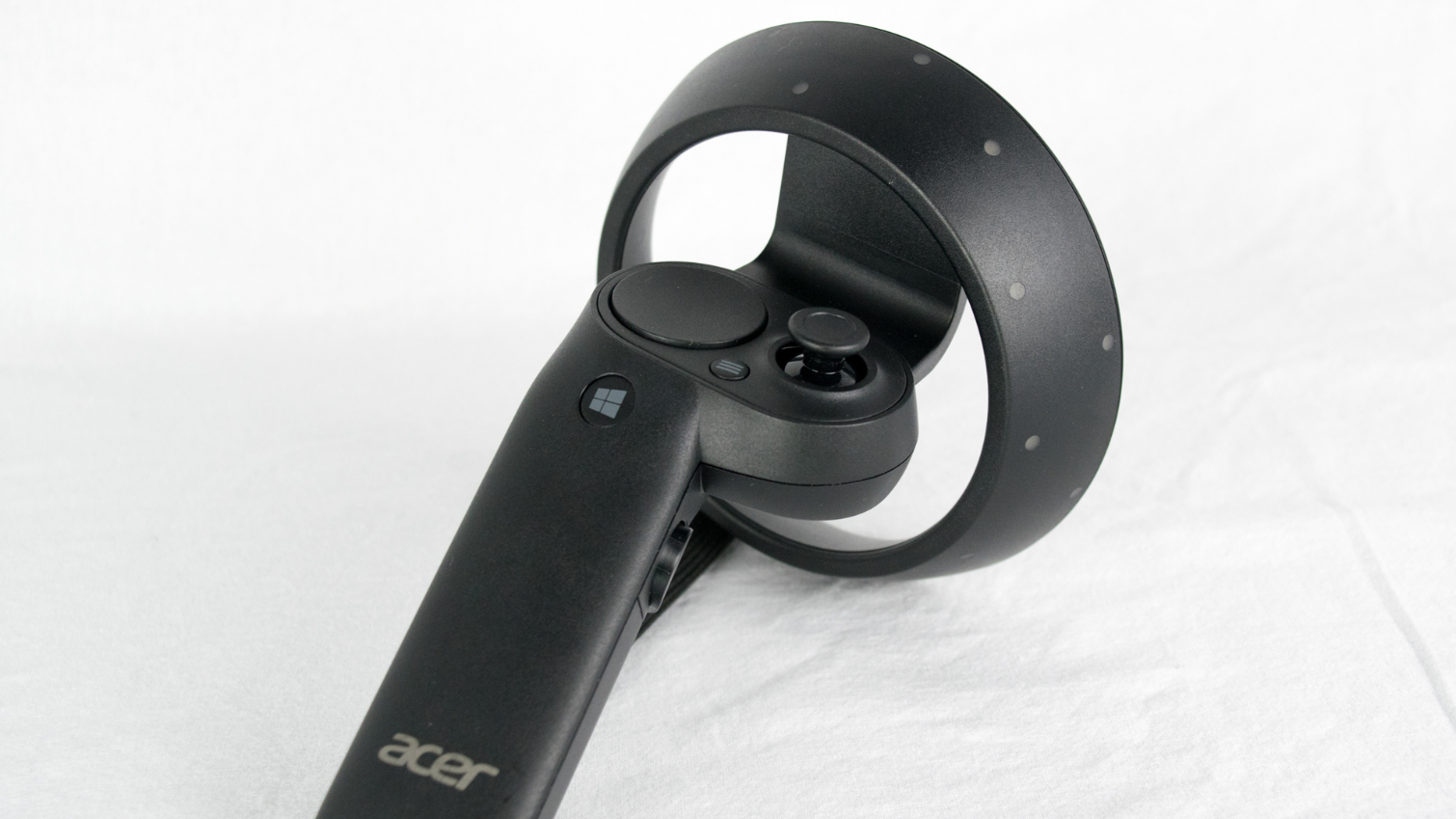
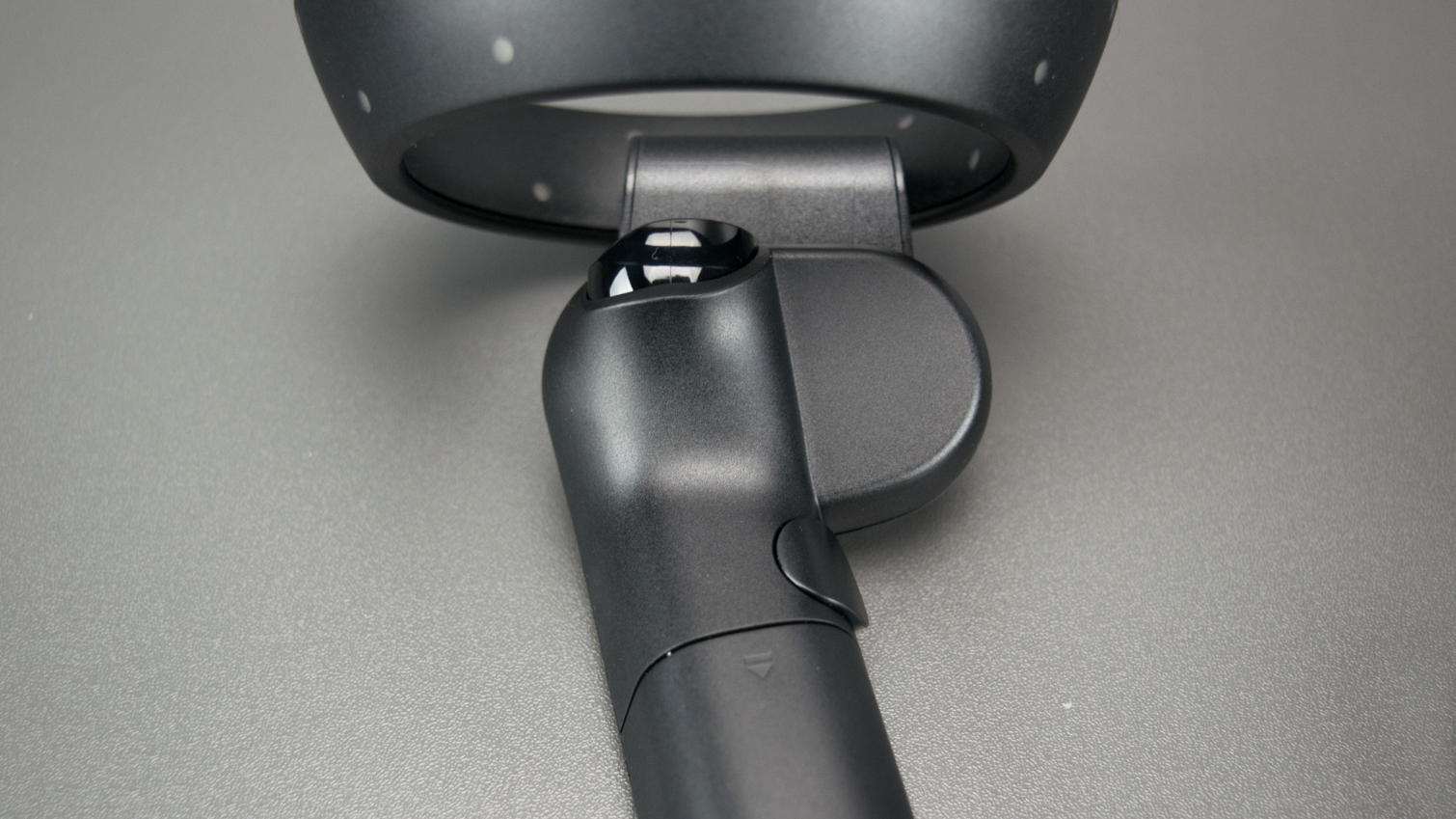
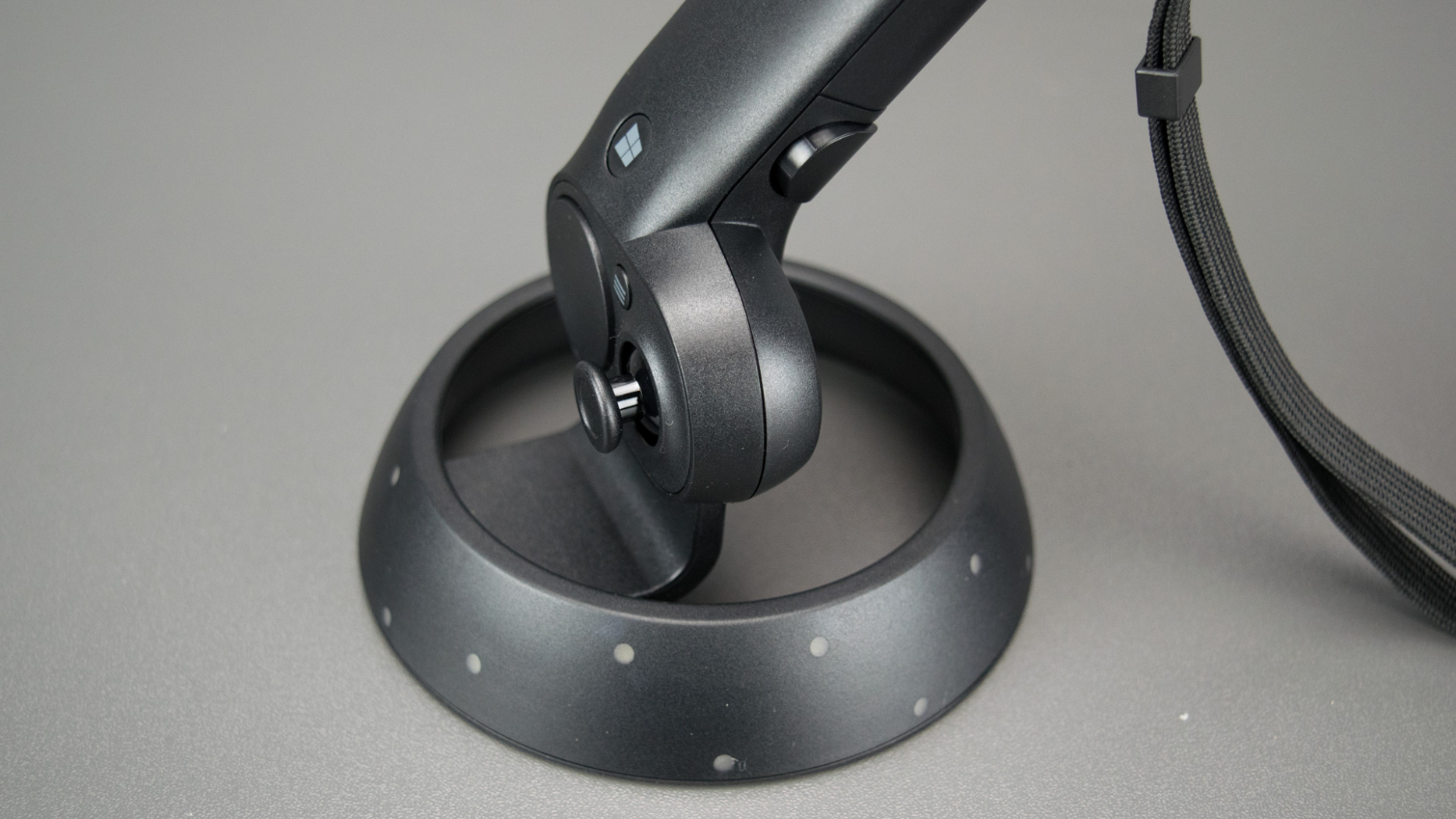
At the top of each controller is a halo ring with 18 white LEDs, which provide reference points for the camera-based tracking system. The controllers include IMU and magnetic sensors as well. These serve as backup for Acer's primary system, keeping the controllers in line whenever they're outside the headset camera's visual range.
Uncomfortable Controller
Acer went with Microsoft’s reference controller design, which offers plenty of input buttons, but lacks ergonomic refinement. Manufacturing quality leaves much to be desired, too. We're left wondering how the controllers made it past the prototype stage in this from.
Microsoft is obviously no stranger to building input devices. It arguably makes the best gamepad money can buy in the Xbox One controller. In fact, we expected Microsoft to equip the WMR controllers with components from its Xbox One parts bin, or at least to leverage its experience in designing comfortable gamepads. This doesn’t seem to be the case.
Instead, we found the WMR controllers surprisingly uncomfortable to use for even moderate lengths of time. The handles are narrow and thin, mostly rectangular, and therefore a poor match for the shape of a hand. The handle's base pushed into our palms when we held on firmly, and our fingers cramped up even with a loose hold on the device. A little more girth in the handle, similar to HTC's controllers, would likely help.
We weren’t impressed with the placement of the buttons, thumbstick, and trackpad. We often had to adjust our grip to reach the various elements. The trigger's position would be fine, except that the controller has a bulge to make space for the trackpad, which affects how you place your finger on the trigger. The trigger has a nice springy feel, but the action is too short and it doesn’t have the smooth click feel you get from an Xbox One gamepad.
Get Tom's Hardware's best news and in-depth reviews, straight to your inbox.
The grip button's placement is good. However, you might have a different experience if your fingers are particularly long. Depending on how we held the controller, we could either press the grip button with our fingertip or the middle of our finger. With longer fingers, you may not find a comfortable position at all.
The trackpad and thumbstick are too high on the handle for us to reach comfortably. If we placed our hands where we could reach both the trigger and grip buttons, we couldn’t reach the full trackpad with our thumb, and the thumbstick was just barely within reach. We were able to manipulate the thumbstick from our natural grip position, but couldn’t get our thumb fully over the stick. This removes precision control. The controller's thumbsticks are accurate and smooth, but they lack any form of texture to keep your fingertip planted.
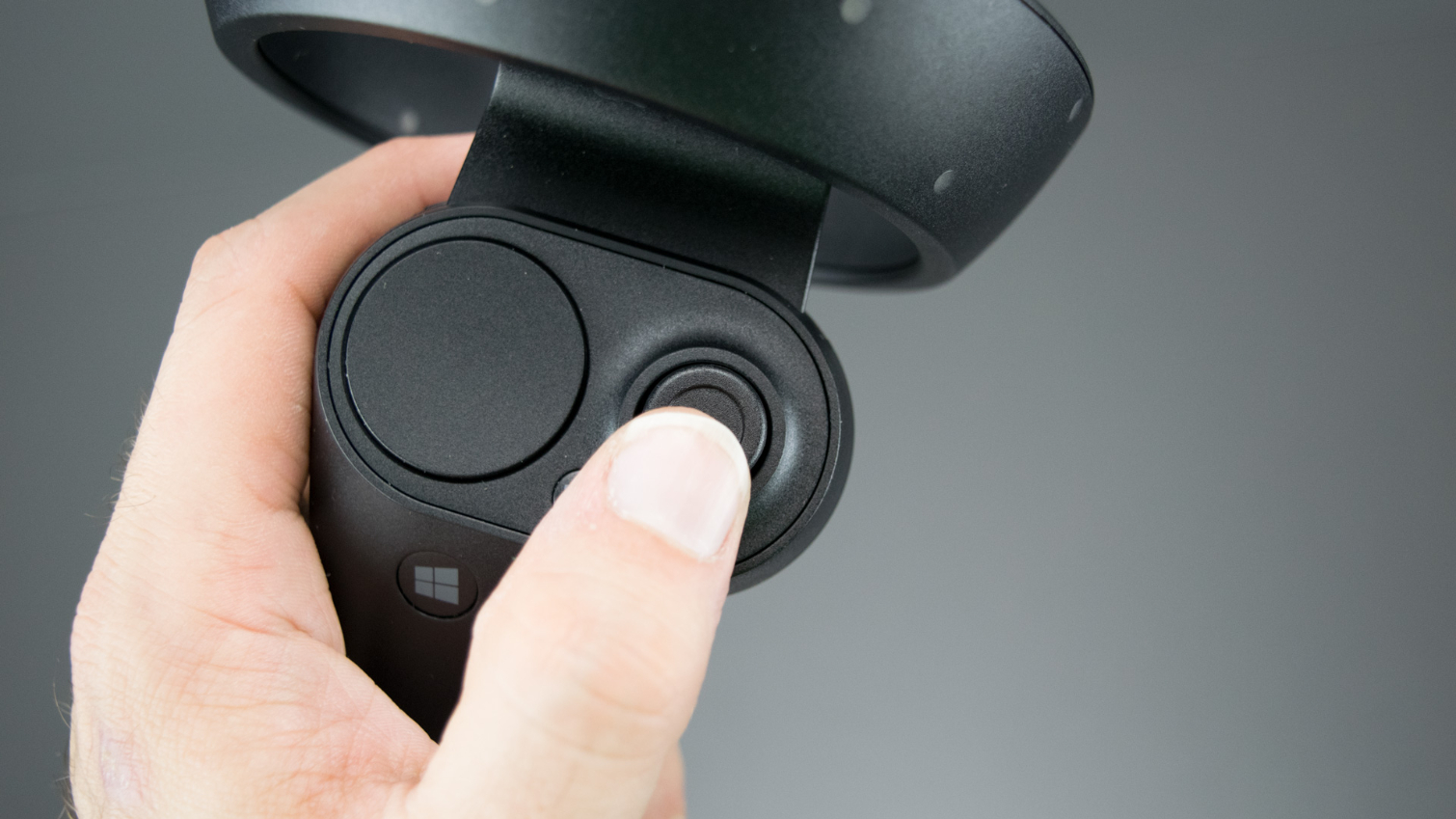
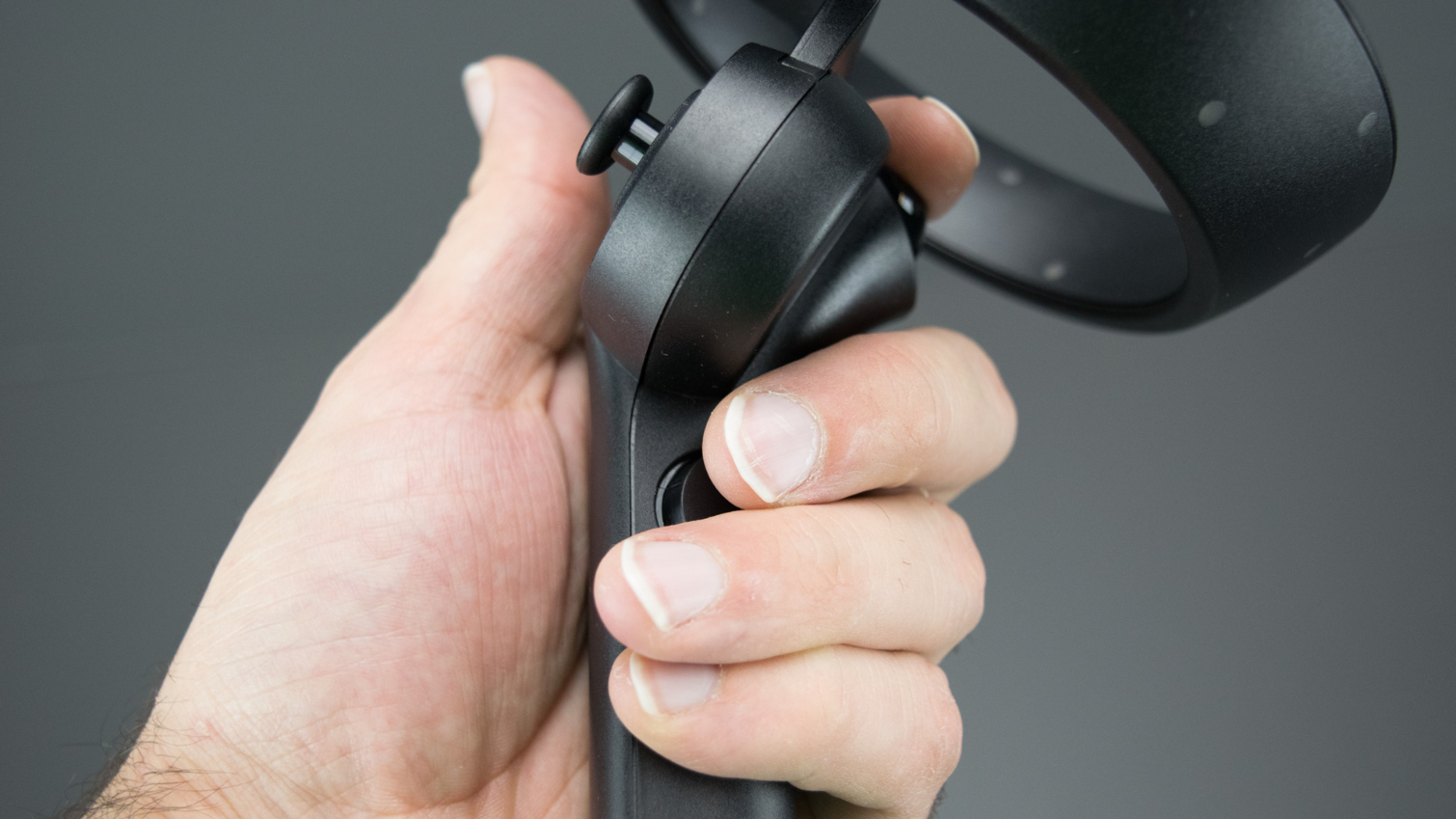
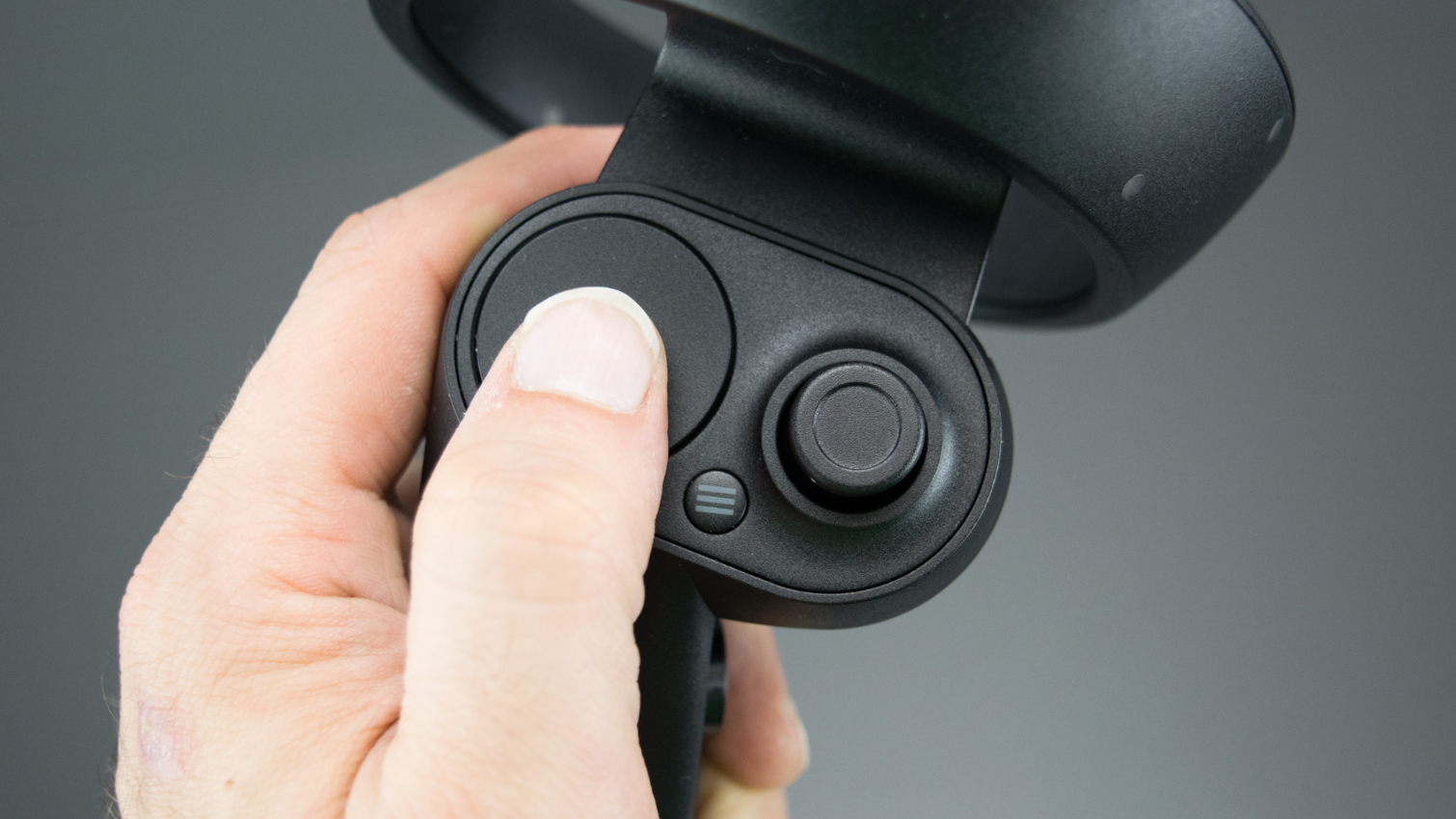
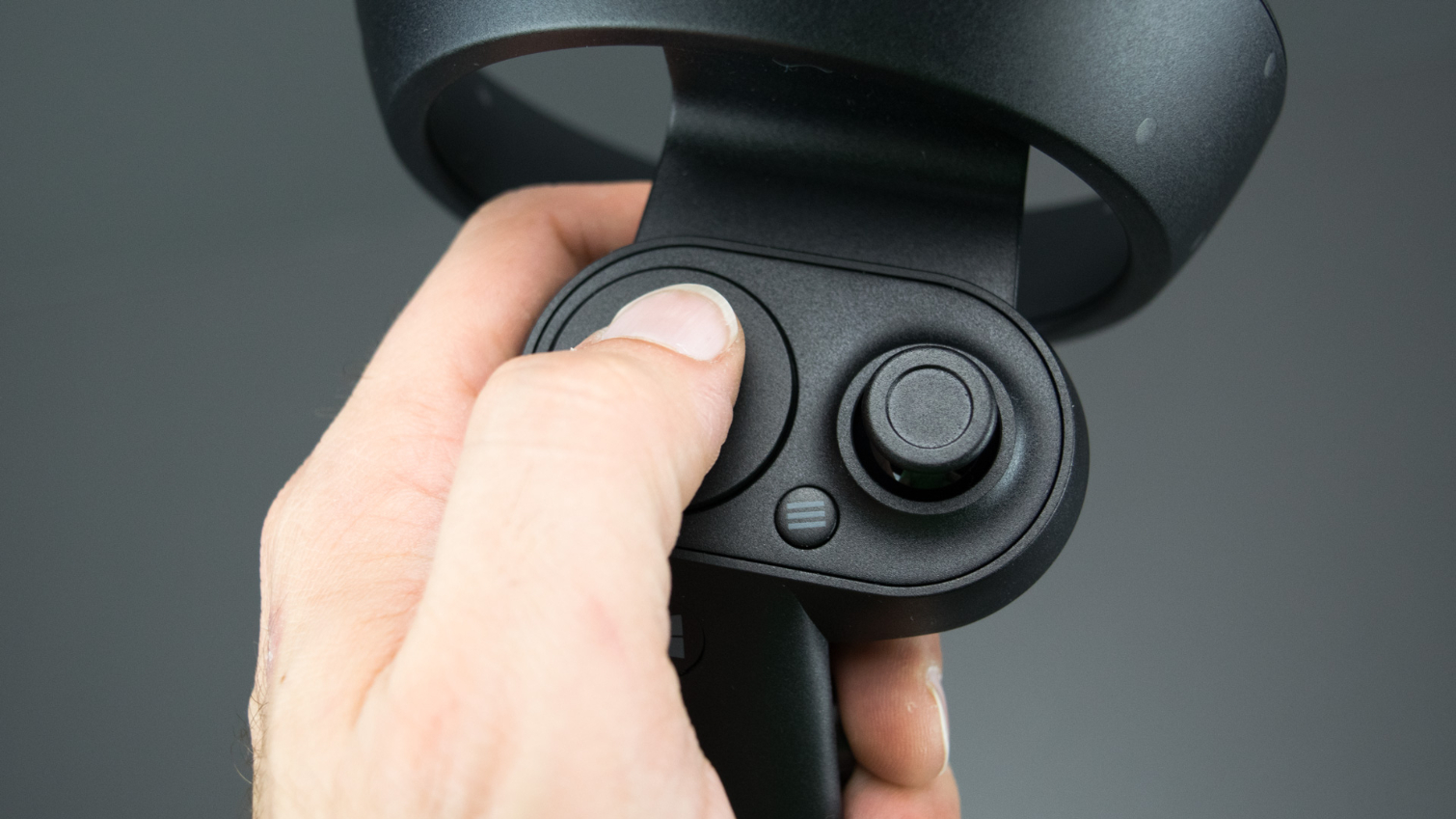
To reach the thumbpad, we had to slide our hand up the handle so far that we could no longer reach the trigger button, forcing us to squeeze that button with the inside of our large knuckle. All factors considered, it becomes quite a nuisance to work with any application that requires trackpad and thumbpad input, such as the Windows Mixed Reality home environment.
We have no qualms with the menu button's placement, but we don't like where Microsoft put its Windows button, which is located exactly where our thumb naturally rests when we hold the controller most comfortably.
Warning: Fragile
The Vive wand and Oculus Touch controller can take a beating, which we know because we've inadvertently slammed them into walls, bookshelves, display cabinets, ceiling fans, and the floor. We’re not convinced that Acer's controllers will stand up to similar abuse, though. Our primary concern is the piece that holds the handle to the tracking halo.
The tracking halo is secured to the handle with a plastic bracket. This bracket is rigid, but the attachment inside the handle is flexible and seems weak. There's enough flex in the attachment that the handle wiggles whenever you place the controllers on a surface halo-side down. We don’t have much confidence that it would survive a good smack against a solid wall.
MORE: Best Virtual Reality Headsets
MORE: All Virtual Reality Content
MORE: Virtual Reality Basics
Current page: The Acer Mixed Reality Motion Controllers
Prev Page The Acer Windows Mixed Reality Headset Next Page System RequirementsKevin Carbotte is a contributing writer for Tom's Hardware who primarily covers VR and AR hardware. He has been writing for us for more than four years.
-
steve15180 I realize the article has a certain lead time. However, when the price dropped like a rock on these headsets last week, that changed the whole conclusion of the article. Is itReply
really that difficult in an online publication to update pricing before publishing? Not
the first time I've seen pricing off on these articles. -
jpe1701 I have the HP hmd and I really like it. Are all of the controllers the same for wmr? Mine fit my hand well but as you say they don't inspire much confidence that they will last.Reply -
kcarbotte Reply20647180 said:I realize the article has a certain lead time. However, when the price dropped like a rock on these headsets last week, that changed the whole conclusion of the article. Is it
really that difficult in an online publication to update pricing before publishing? Not
the first time I've seen pricing off on these articles.
The price didn't drop. Amazon is selling them at a huge discount, but if you look at Microsoft's website the price hasn't dropped for any of them.
https://www.microsoft.com/en-us/windows/windows-mixed-reality -
Sakkura Reply20649878 said:20647180 said:I realize the article has a certain lead time. However, when the price dropped like a rock on these headsets last week, that changed the whole conclusion of the article. Is it
really that difficult in an online publication to update pricing before publishing? Not
the first time I've seen pricing off on these articles.
The price didn't drop. Amazon is selling them at a huge discount, but if you look at Microsoft's website the price hasn't dropped for any of them.
https://www.microsoft.com/en-us/windows/windows-mixed-reality
Amazon is a much bigger store than Microsoft. And this is not the first time the price has dropped either. $400 is just a technicality, the practical price for the headset is under $300 (as are the other Windows MR headset, apart from the much better Samsung Odyssey model).
On another note, I think you should have put more emphasis on the lack of integrated audio. You're forced to fiddle with a separate audio headset, with its own extra cord flopping around, and often physically interfering with the VR headset. It's really a major downside compared to the Samsung Odyssey, Oculus Rift, and Vive + deluxe headstrap upgrade. -
cryoburner Reply
Yep, WMR headsets have been commonly available under $300 for a while. Sure, the MSRP might not have officially dropped, but the headsets from Acer, Dell, Lenovo and HP are all available in this price range online. In fact, some have gone on sale for under $250 at times. The Oculus Rift getting permanently discounted to $400 has made it necessary for these headsets on a less established platform to sell for less, particularly since most of them don't do much to be distinct from one another. I'm sure the high price of graphics cards hasn't helped either. It's undoubtedly hurting sales of the Rift and Vive too, but the higher resolution of these HMDs means even higher-end hardware is required for gaming, which is undoubtedly still their main draw.20650111 said:And this is not the first time the price has dropped either. $400 is just a technicality, the practical price for the headset is under $300 (as are the other Windows MR headset, apart from the much better Samsung Odyssey model).
It might be worth at least mentioning in the conclusion that it may be possible to find the headsets for well under retail. That could change of course, if adoption of the platform were to really pick up, but I think the main thing selling them currently is their lower price. -
SWKerr This is a pretty weak review especially considering that it is months after release. The cost of the actual Windows MR headsets has been between $200-300 for more than a month. Not mentioning this fact makes the conclusion misleading at best.Reply
I find it odd that you did not delve into the fact the Windows store has very few games and that you really need to use the Steam store for gaming. (Which is what 95% of people want these things for.) It would have been very helpful had you talked about this and mention some potential game compatibility limitations. Personally I have found the MR headsets work very well for every game I have tried but since they are not written for MR you are often looking at a Vive controller and guessing about how controls are mapped.
Having used all available VR headsets at this point, I actually like the Windows MR the best. It is about the ease of setup. You do not end up with a bunch of wires running everywhere for the tracking and unless you have a large dedicated room for VR this is a big deal. The tracking may not be quite as good as a perfect setup of the competitors but it is functionally really good.
Video cards: VR reviews should mention the current state of decent video cards at this time. These things will be very disappointing on anything less than a GTX 1060 6GB or RX 580 8GB. But...getting you hands on one is unlikely at any reasonable price point.
Controllers: The reference controller could be better ergonomically but they are not uncomfortable to use for long periods of time. (Samsung actually made a better version for their headset combo.) What I find nice about the controller is that becase they have both the touch pad and stick inputs you can generally play both Vive and Rift games. The controllers are interchangeable across all the headsets and I expect someone to come out with a better aftermarket controller at some point.
Really the Windows MR headsets are a good entry point for VR. They would not be good value at $399 but they are nowhere close to that price point. -
kcarbotte Reply20651505 said:This is a pretty weak review especially considering that it is months after release. The cost of the actual Windows MR headsets has been between $200-300 for more than a month. Not mentioning this fact makes the conclusion misleading at best.
I find it odd that you did not delve into the fact the Windows store has very few games and that you really need to use the Steam store for gaming. (Which is what 95% of people want these things for.) It would have been very helpful had you talked about this and mention some potential game compatibility limitations. Personally I have found the MR headsets work very well for every game I have tried but since they are not written for MR you are often looking at a Vive controller and guessing about how controls are mapped.
Having used all available VR headsets at this point, I actually like the Windows MR the best. It is about the ease of setup. You do not end up with a bunch of wires running everywhere for the tracking and unless you have a large dedicated room for VR this is a big deal. The tracking may not be quite as good as a perfect setup of the competitors but it is functionally really good.
Video cards: VR reviews should mention the current state of decent video cards at this time. These things will be very disappointing on anything less than a GTX 1060 6GB or RX 580 8GB. But...getting you hands on one is unlikely at any reasonable price point.
Controllers: The reference controller could be better ergonomically but they are not uncomfortable to use for long periods of time. (Samsung actually made a better version for their headset combo.) What I find nice about the controller is that becase they have both the touch pad and stick inputs you can generally play both Vive and Rift games. The controllers are interchangeable across all the headsets and I expect someone to come out with a better aftermarket controller at some point.
Really the Windows MR headsets are a good entry point for VR. They would not be good value at $399 but they are nowhere close to that price point.
"This is a pretty weak review especially considering that it is months after release."
I'm sorry you feel that way. I'm not going to get into the politics behind the delay in publishing, but the review was written before Christmas.
"The cost of the actual Windows MR headsets has been between $200-300 for more than a month."
Amazon is the only place that I've seen the headset discounted. Acer did no drop the price, and Microsoft didn't step in to subsidize the cost.
When the price comes down at all retailers, we'll update the review. Until then, I stand by what I wrote. Acer wants $400 for the package, and unless you buy from Amazon, that's what you'll pay.
"I find it odd that you did not delve into the fact the Windows store has very few games and that you really need to use the Steam store for gaming."
Page 8 discusses that briefly. What would you suggest should be added?
"Video cards: VR reviews should mention the current state of decent video cards at this time."
We have written a lot about the current state of the graphics card market. I don't believe that has any place in a VR review because it's a temporary state of the market. Yes, it sucks to buy into VR right now because of GPU prices, but that doesn't affect the merit of the headset itself, nor the platform it runs on.
"Controllers: The reference controller could be better ergonomically but they are not uncomfortable to use for long periods of time."
Maybe for you, but my hands cramped up within 10 minutes of using them, and several people who tried it had similar complaints. Not everyone will have that problem, but the controllers were not designed in such a way that most people won't have problems.
As for the Samsung controllers-- I haven't received a sample from Samsung yet, so I can't say much about that. I used Samsung's controllers for about 10 minutes and they are much better ergonomically. -
Heliosurge Reguarding no integrated audio; have you considered one of the many wireless headset options? Many bluetooth ones also require no headband.Reply
Steam? Did you miss the "Early Access support" support in steam. Or the fact that if you are a steam user; we would see a new headset icon that represents WMR.
Reviews usually go with suggested retail price not a retailer's sale. Now i do agree that a small addition mentioning that Amazon is having a sale on them.
But all in all a great review! -
Heliosurge KevinReply
While Intel's igpu peeformane was not good are you able to run some tests on Amd's Apus? Fm2+ & Ryzen Apus would be interesting if they yeild better results.
